If you are a fan of Japanese cuisine, you may have heard about Wagyu – one of the most expensive dishes not only in Japan but also all over the world. Today, we will introduce Wagyu (or Japanese beef) and let’s find out what makes it so expensive.
What is Wagyu?
Wagyu is a beef cattle breed unique to Japan. In Japanese, wa (和) means Japanese and gyu (牛) refers to beef. Wagyu comes from four breeds of domestic cattle: Japanese Black, Japanese Brown, Japanese Shorthorn, and Japanese Polled cattle. Wagyu is famous for its rich flavour and melt-in-your-mouth texture.
In Japan, when talking about beef, there are importd beef, domestic beef and wagyu. As “wagyu” literally means Japanese beef in Japanese, some people may wonder if Japanese domestic beef and wagyu is the same thing. Simply speaking, imported beef refers to meat that is processed and imported to Japan. Domestic beef basically refers to beef raised and processed in Japan. If cattle from foreign country are then imported and raised in Japan, they can be labeled as domestic Japanese cattle.
However, wagyu beef cattle only refers to 4 native breeds: Japanese Black (Kuroge), Japanese Brown (Akage), Japanese Shorthorn (Nihon Tankaku) and Japanese Polled (Nihon Mukaku).
- Japanese Black (Kuroge): Most of the 1.7 million Wagyu cattle raised in Japan are of this type (about 95%). The meat quality is excellent thanks to the beautiful marbling pattern.
- Japanese Brown (Akage): tan to reddish brown hair. A cattle that was born by crossing foreign breeds with native cattle.
- Japanese Shorthorn (Nihon Tankaku): dark brown hair. A cattle that has been improved by crossing foreign breeds with native cattle from the northern Tohoku region.
- Japanese polled (Nihon Mukaku): black hair, relatively small body, short legs. Japanese polled cattle was born by crossing native Wagyu and foreign breeds in Yamaguchi Prefecture.
Wagyu Grading System
Japanese A5 Wagyu is said to be the most expensive in the world. However, what is A5 and why does it cost so much? Let’s find out in this section about Japanese Beef Grading System.
- “A”: A stands for “Yield Grade”, which is used to estimate cutability (or the proportion of a meat in the cow that can be eaten). The highest grade is A which means that more than 72% of the cow is edible. (A>= 72%; B>= 69%; C < 69%)
- “Five” refers to “meat quality grade”. There are 4 categories for determining meat quality: marbling, meat brightness, meat firmness and texture with 5 grades from 1 to 5 (1 is the poorest quality while 5 is the highest quality).
Beef Marbling Standard (BMS)
The BMS ranges in stages between No.1 and No.12:
| Marbling Grade Categories | |
| Grade 1 (very scarce) | No.1 |
| Grade 2 (somewhat scarce) | No.2 |
| Grade 3 (standard) | No.3 – No.4 |
| Grade 4 (somewhat abundant) | No.5 – No.7 |
| Grade 5 (abundant) | No.8 – No.12 |
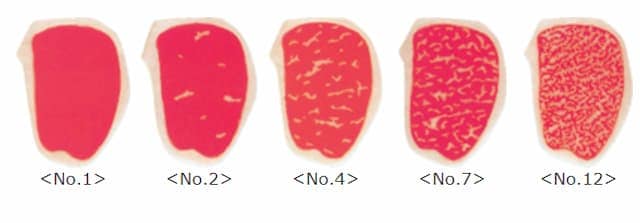
(Source: Japan Meat Information Service Center)
Meat Color
The brightness of color is determined by Beef Color Standard (BCS)

(Photo source: Japan Meat Grading Association)
| Color Grade | |
| Grade 1 | |
| Grade 2 (Close to Standard) | No.1 – No.7 |
| Grade 3 (Standard) | No.1 – No.6 |
| Grade 4 (Good) | No.2 – No.6 |
| Grade 5 (Excellent) | No.3 – No.5 |
Meat Texture
Judge the tightness and texture with the naked eye and determine the grade. The finer the texture and tighter the meat, the higher the grade.
| Grade of Texture | Firmness | |
| Grade 1 | Loose | |
| Grade 2 | Close to standard | |
| Grade 3 | Standard | |
| Grade 4 | Good | |
| Grade 5 | Excellent |
Fat quality

(Photo source: Japan Meat Grading Association)
Grade of fat is evaluated by its color, its gloss and quality of fat according to Beef Color Standard (BFS):
| Color Grade | |
| Grade 1 | |
| Grade 2 (Close to Standard) | No.1 – No.7 |
| Grade 3 (Standard) | No.1 – No.6 |
| Grade 4 (Good) | No.1 – No.5 |
| Grade 5 (Excellent) | No.1 – No.4 |
History

Most of people do not know that a lot of Japanese popular brand beef such as Matsuzaka, Omi, Maezawa, etc originally came from Tajima region. According to one survey in 2012, 99.9% of Japanese Black cattle breeds were inherited from a single cow called Tajirigo, which was born in Ojiro, Kami. Before getting to know about the history of Japanese beef, let’s find out details about Tajima beef.
What is Tajima beef?
Tajima beef is a Japanese black cattle breed that have been raised and fattened in Hyogo Prefecture. Among them, Tajima beef that has acquired certain conditions (such as marbling, color, texture, etc) is called “Kobe beef”. In other words, Kobe beef is one brand with the highest grade among Tajima beef. Tajima beef has a BMS (Beef Marbling Standard) of 3 to 5 and it becomes Kobe beef when BMS is 6 or higher.
Breeding history of Japanese beef cattle
In Japan, until the Edo period, people used to raise cows not for food but for agriculture. In the past, Japanese people used to have several cows in their house, raise and live together as a labor force of the family.
As time passed, in the early Meiji period, the food culture of eating beef spread in Japan with the introduction of western cuisine. At the same time, in order to make Japanese cows, genetic improvement was actively carried out by crossing with foreign males breeds. However, this was a big mistake. The unfortunate result is this generation of cows was often sick, and above all, have poor meat quality.
Tajiri-go, the root of Japanese Black cattle
After the war, in spite of Japanese government’s effort to restore the original wagyu beef, it seemed to be too late as there were no pure-bred Japanese Black breeds left in Japan.
While they were about to give up on the revival of wagyu beef, it was miraculously discovered that there were four pure-bred Tajima cows that had escaped crossbreeding with foreign breeds in a mountainous village (Atsuta area) in Ojiro-ku, Kami-cho. This village is in a highland with an altitude of 700m, and was far away from other villages, so those Tajima cows were able to avoid crossbreeding.
One of the four remaining cows gave birth to Tajiri-go, who is said to be the “great grandfather of wagyu”. Tajiri-go was genetically strong with great meat quality so it was used to breed many offspring. Until nowadays, DNA of Tajiri is recorded to be the root of 99.9% of the current Japanese Black cattle (Kuroge Wagyu). If it weren’t for these “four miraculous cows” and Tajiri, “Wagyu”, which is now spreading all over the world, wouldn’t exist.
Three best Wagyu in the world
There are three brands that are worldwide known as “top three” best wagyu (Sandai Wagyu): Matsusaka Beef, Kobe Beef and Omi Beef. As we stated in the previous part, they all have the same roots – Tajima beef; however, each of these brands have a unique flavor.
Omi Beef
Among more than 200 brands of beef in Japan, Omi beef is Japan’s oldest brand beeff with a history of over 400 years. It is Japanese black cattle bred in Shiga prefecture which is blessed with a rich natural environment and water.
During the Edo period, when eating meat was still banned, Omi beef was presented to the Tokugawa shogunate under the name of “Henpongan”, a healing medicine made of beef pickled in miso, and then spread throughout the country. Omi beef is popular with its rich marbled texture and refreshing taste which is suitable for “Gyu-tataki” and “nigiri sushi”. We also recommend you eat with sukiyaki or shabu-shabu for tender fine texture and sweet fat.
Read more about Omi beef here.
Kobe Beef
Kobe Beef is well-known not only in Japan but also all over the world. As one of Japan’s major ports, Kobe itself is a popular place for foreigners to visit. Former US President Barack Obama famously requested Kobe beef when he visited Japan in 2009. In addition, many celebrities such as politicians, royal family members, and entertainers want to try this expensive meat once. As kobe beef is characterized by fine meat quality and marbling, “Sukiyaki” is best for experiencing this brand of meat. It has a strong flavor so you can also enjoy with vegetables and tofu.
Want to find out more about the secrets to the deliciousness of Kobe beef? Click here.
Matsusaka Beef
There are two types of Matsusaka beef: “Tokusan Matsusaka beef” and “Matsusaka beef.” The “Tokusan” is calves raised in Hyogo Prefecture, including the Tajima region, that have been fattened one by one by farmers for more than 900 days. Farmers raise the cows with best condition and experimented with different ways to produce higher meat quality such as giving the cattle beer, or coating their bodies with shochu. Farmers have to minimize the stress on the cattle and make sure that they are raised with great care. With such great effort, there is no doubt that Matsusaka beef has such high meat quality, a melt-in-the-mouth texture, and a sweet, deep, elegant
If you are a fan of Matsusaka beef, do not miss this article!
Wagyu FAQ
- Is an A1 or A5 Wagyu beef better?
A5 is regarded as the best quality of wagyu so A5 is better than A1 Wagyu in term of quality. For grading beef, A refers to “Yield Grade” and the number “5” represents meat quality grade (from grade 1 to grade 5 with 5 is the highest).
- Is A5 the most delicious?
We have stated in this article about how to rank Wagyu in Japanese standard. However, although A5 has the highest quality, it does not mean that A5 has to be the most delicious. The (A, B, C) “yield grade” is an evaluation of “productivity”, so it has nothing to do with the taste. One of the keywords that you need to pay attention to when talking about delicious meat is oleic acid.
There are three things to determine the deliciousness of meat: taste, aroma, and texture. In particular, meat containing a large amount of oleic acid, which is also found in olive oil, has a low melting point and has a good flavor and melt in the mouth.
- Is Tajima beef and Kobe beef the same?
Not really. Among Tajima beef, Kobe beef is one brand with the highest grade. Tajima beef has a BMS (Beef Marbling Standard) of 3 to 5. If BMS is 6 or higher, it becomes Kobe beef.
Recommended recipe for wagyu

Classic dishes for Wagyu
Wagyu is long a symbol of Japanese cuisine. Therefore, let us introduce some dishes that bring out the best quality of this high end meat!
Sukiyaki
Sukiyaki is one of the representative hot pot with meat, vegetables and other ingredients. Despite having the same name, the recipe to cook sukiyaki is different depending on the region: Kanto-style sukiyaki and Kansai-style sukiyaki. If you want to find out about the differences, click here to read more.
Gyunabe
Gyunabe means “beef hotpot” in Japanese so the main ingredient of this dish must be beef. Therefore, it is the best dish to enjoy the high quality of meat without getting bored. Some people may think gyunabe is the same as sukiyaki but there is small difference between these two dishes. Click here to find out.
Gyudon
Gyudon (also gyumeshi) consists of a bowl of rice topped with sliced beef, onions, etc. It is a traditional dish from Tokyo in the Kanto region with red ginger and shichimi pepper as their toppings. It is not very difficult to make Gyudon at home so you can try making it at home following our recipe here.
Gyu-tataki
Gyu tataki (or beef tataki) is a traditional raw Japanese in which the meat is quickly seared, marinated and then thinly sliced and served with dipping sauce. Unlike other dish, beef tataki brings out the delicious, fresh and tender of the meat. It is a simple yet delicious dish that we recommend you to try once if you are a fan of wagyu.
Yakiniku
Japanese people really love yakiniku so it is really easy to find yakiniku restaurant all over Japan. Depending on the store, type of meat served can differ so make sure to search about the restaurant’s menu before going.
Nikujaga
In Japanese, niku means “meat” and “jaga” is abbreviation for jagaimo (potatoes). Therefore, the main two ingredients of the dish are definitely meat and potatoes. For the meat, you can choose beef or pork. It is a easy home-cooked dish familiar to Japanese so you can also try it at home. Find out details about Nikujaga here.
Recipe for Gyu Tataki
Ingredients
| Ingredients | Measurement |
| Fillet beef | 600g |
| Red wine | 300cc |
| Salt and peper | Appropriate amount |
| Grated ginger | Appropriate amount |
| Onion (optional) | 1/2 |
How to cook Beef Tataki?
Remove the beef from the refrigerator and leave at room temperature. Sprinkle the surface with salt and pepper to remove excess moisture and odor.
On a medium-sized frying pan, place the fillet into the hotpot to sear on all sides.
Wrap the seared meat in aluminum foil and wait for about 30 minutes.
Marinate beef in red wine for at least 1 hour, preferably overnight in the refrigerator.
If you want to serve with onions, slice them and then soak in water.
Place the onions on a plate and the cut beef tataki on top. You can also top with raw vegetables such as sprouts. Dip with sauce and enjoy!
Restaurants/ Stores
Towa (常)

A new restaurant specialized in high quality wagyu beef with refreshing and sweet taste. In addition to Japanese cuisine such as simmered dishes and seasonal fish sashimi, the restaurant also serves seasonal wagyu dishes so that you can experience various dishes depending on the weather.
Oniku Hanayagi (おにく 花柳)

Oniku Hanayagi is a restaurant that serves the world’s best wagyu beef and is attracting attention from overseas media. This restaurant mainly serves Japanese black cattle (Kuroge Wagyu). Wagyu can be eaten overseas but only in Japan can you experience the most fresh and delicious wagyu. If you are looking for a restaurant for this special experience, we recommend you add Oniku Hanayagi to your bucket list.
Ginza Tsuru (銀座つる)

A popular wagyu restaurant in Ginza, Tokyo. This restaurant serves several course for special occasions, Joshu Wagyu beef shabu-shabu/ sukiyaki course, etc. Beef in Ginza Tsuru is a brand cattle bred from Gunma prefecture, with mineral-rich clean water and gentle terrain created by Akagi, Haruna, and the Myogi Mountain. Therefore, it has excellent meat quality and umami, rich flavor.
Takeaway
Wagyu is famous wordwide for its high price as well as high price. Wagyu beef is not only famous but also good for health as the profile of marbled wagyu beef is believed to healthy to human health. If you get a chance to Japan, it is such a great idea to visit our recommended restaurant to experience the fresh and delicious wagyu that can only be seen in Japan!
If you love Wagyu, do not forget to check these articles below!
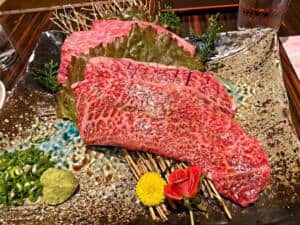
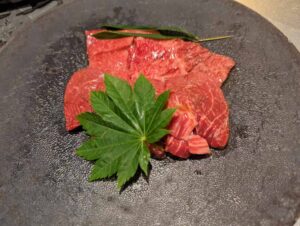
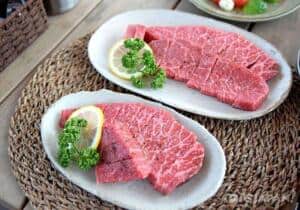
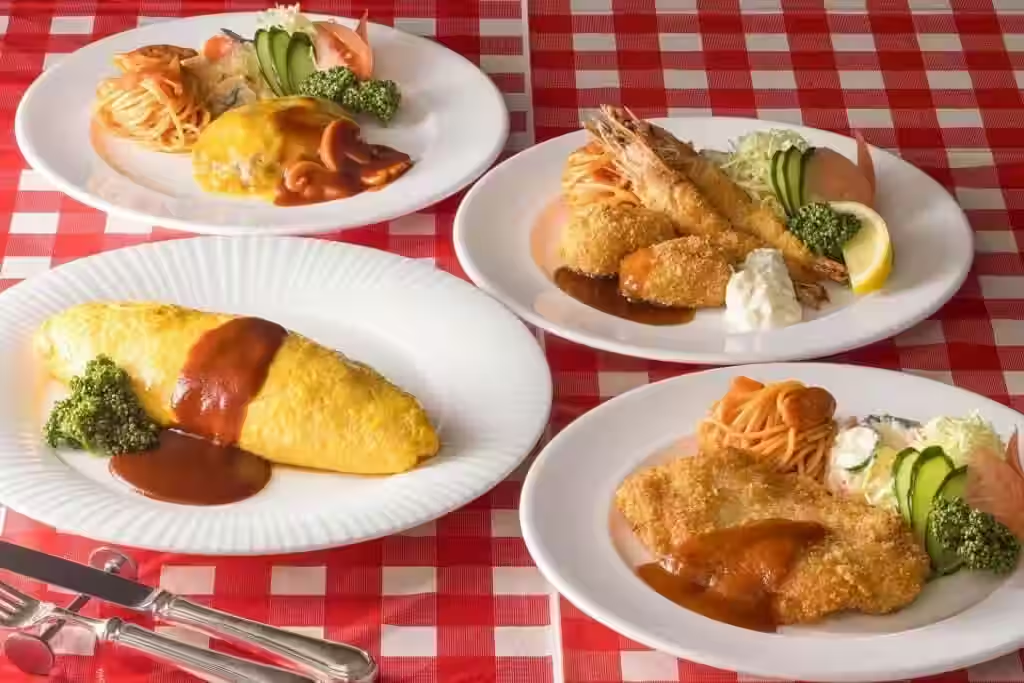
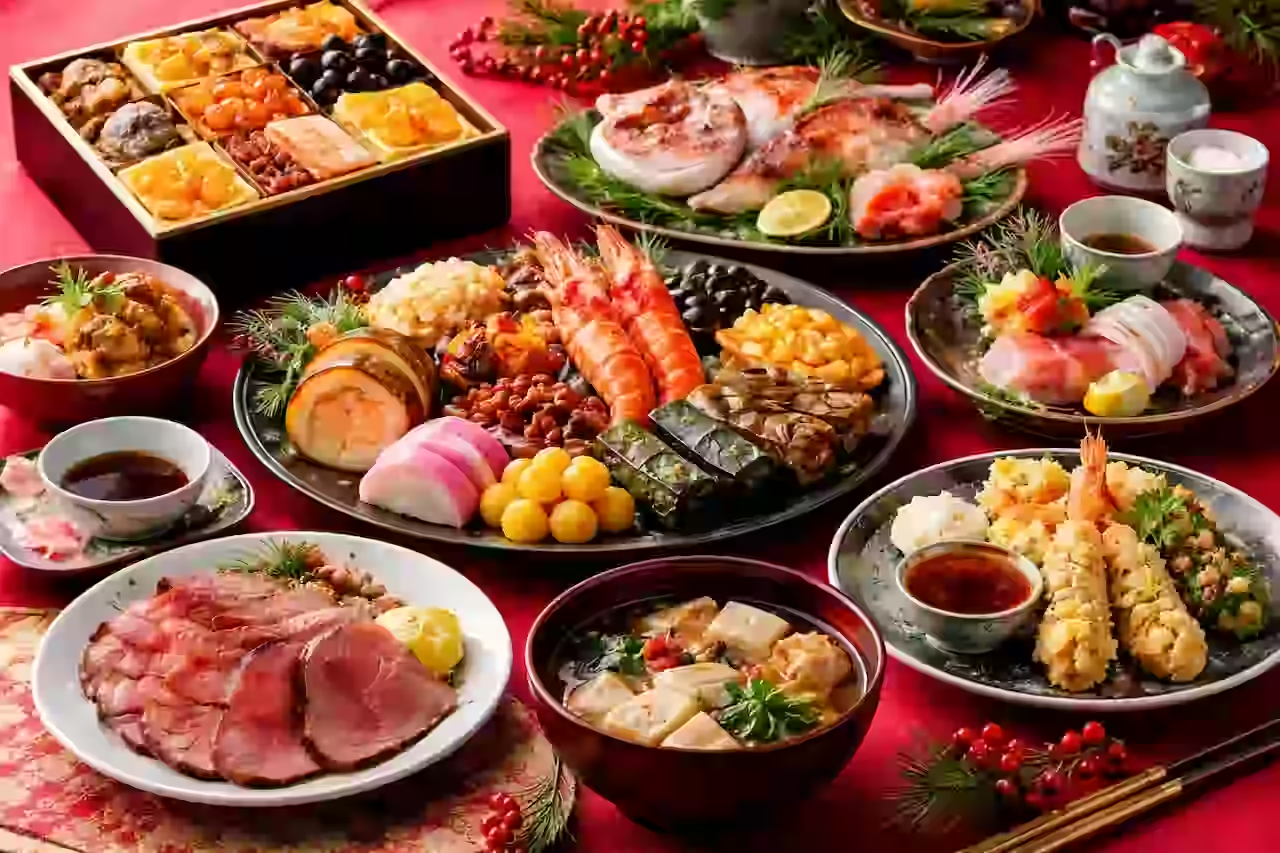
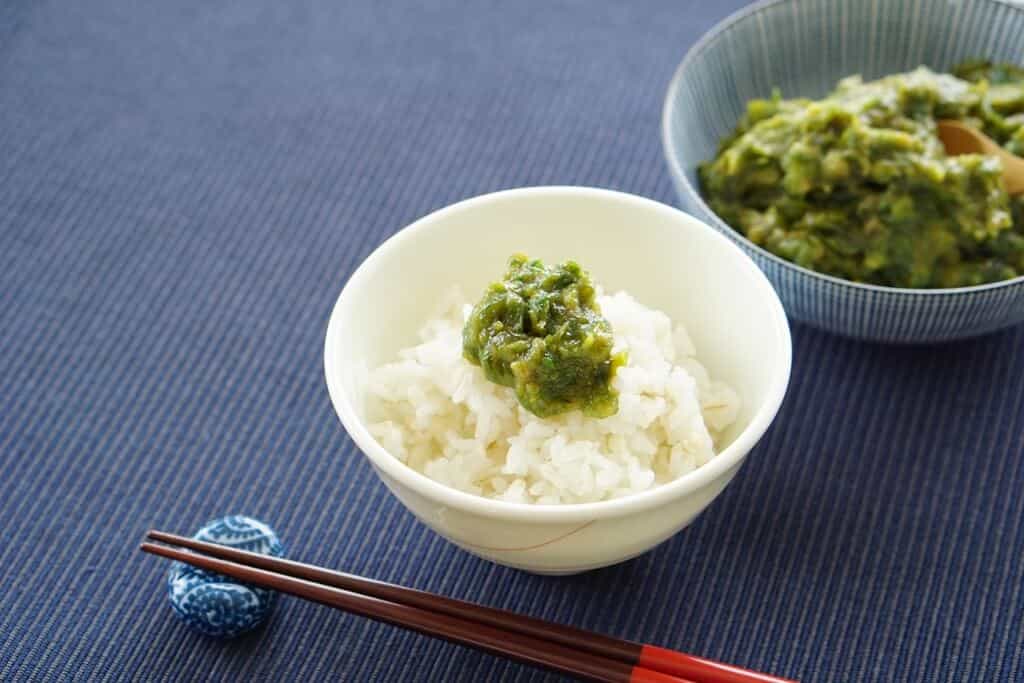
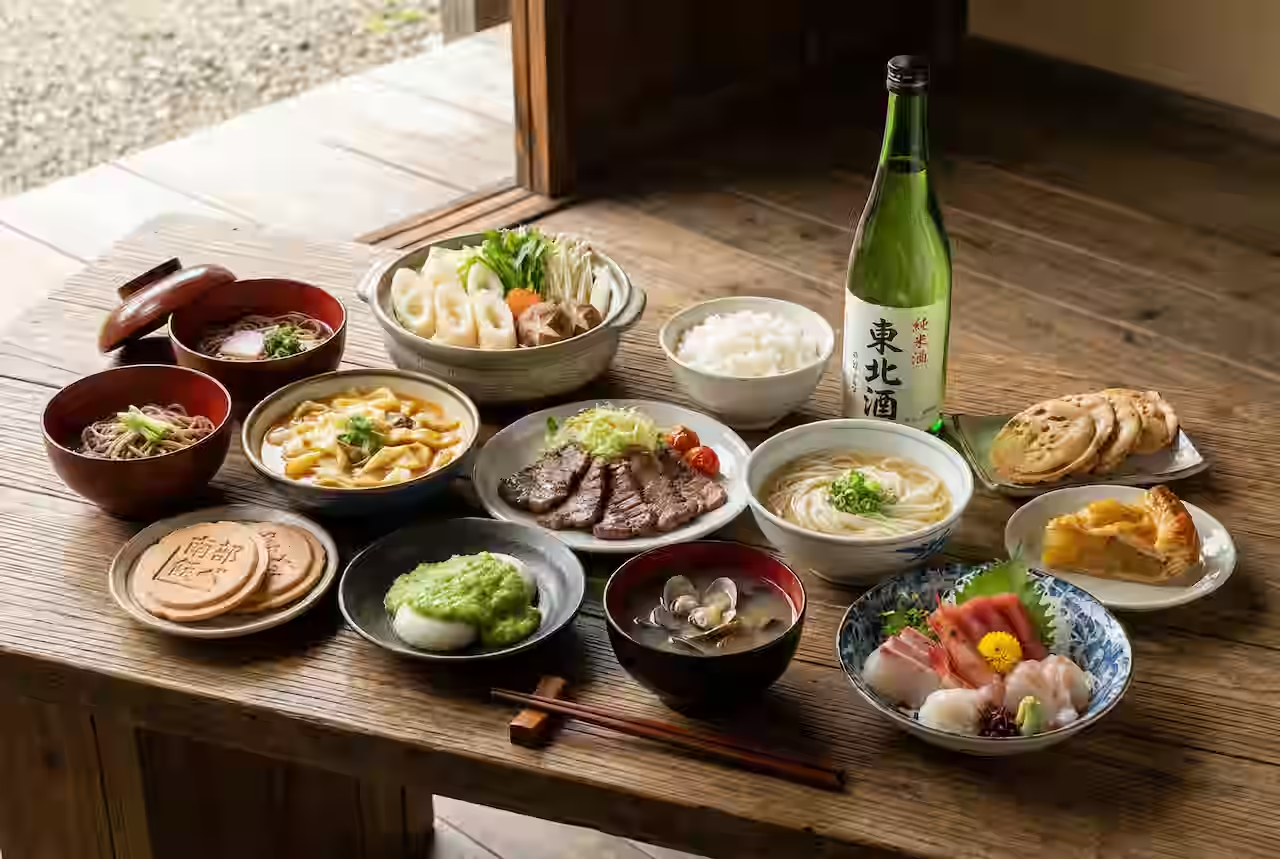


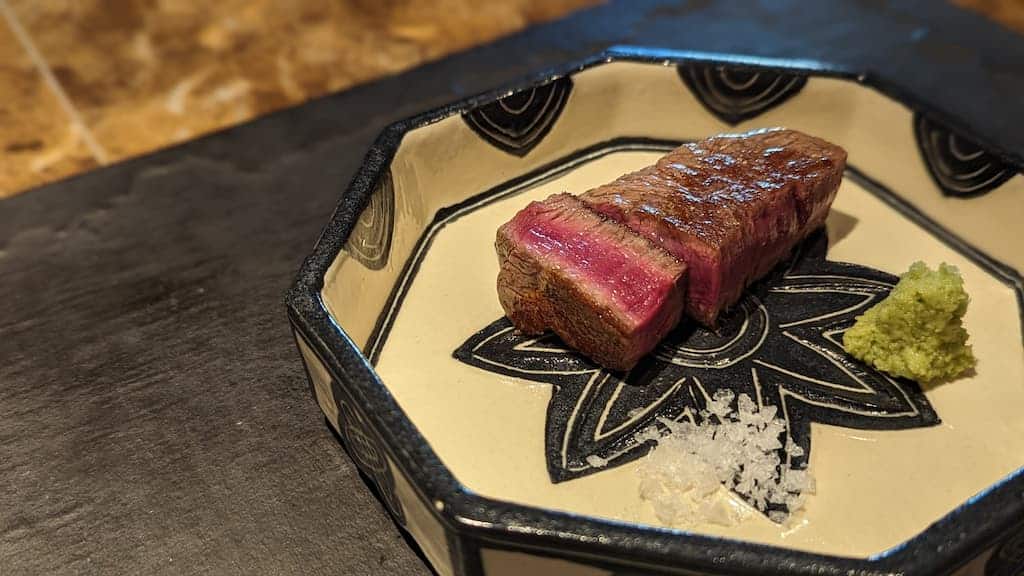
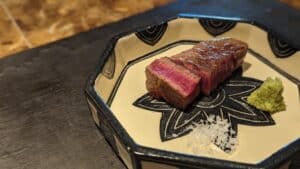
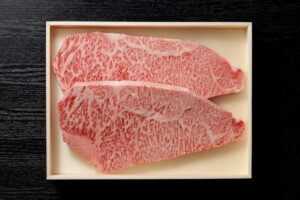
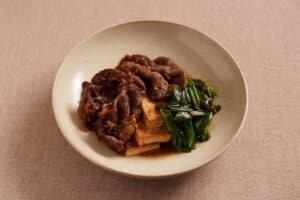
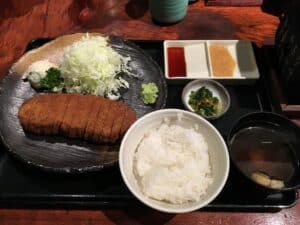

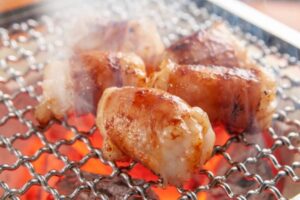
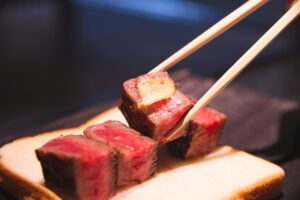
Comments